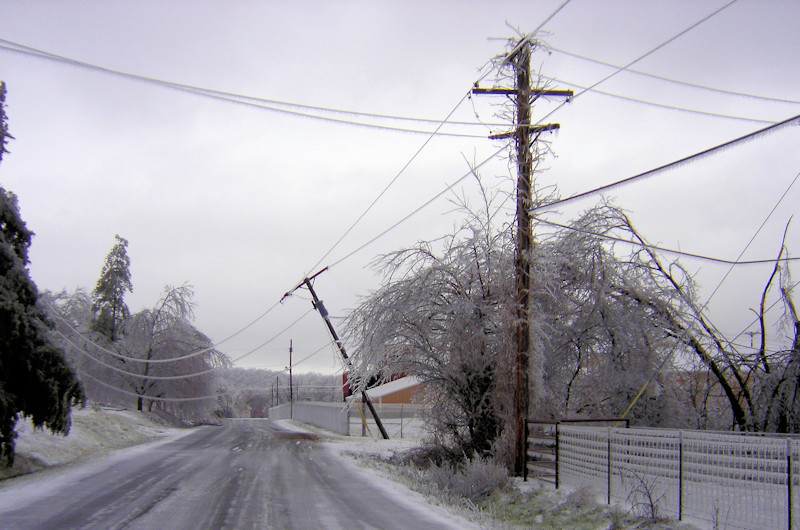 Energy Assurance means assessing risks and planning for the consequences of natural and man-made hazards. Ice storms are often responsible for power outages. Targeted infrastructure improvements and response planning can help reduce both the duration and frequency of power outages.
Energy Assurance means assessing risks and planning for the consequences of natural and man-made hazards. Ice storms are often responsible for power outages. Targeted infrastructure improvements and response planning can help reduce both the duration and frequency of power outages.
© Jack/stock.adobe.com
The goal of energy security planning is to ensure that energy infrastructure is robust, secure, reliable and resilient — able to restore services rapidly in the event of any disaster. Our Nation's energy infrastructure and delivery system are vulnerable to a variety of hazards, including severe weather (hurricanes, flooding, tornados, earthquakes, wildfires, etc.), systems and infrastructures failures, pandemics, deliberate physical, cyber, attacks and other events. While the owners and operators are responsible for their energy infrastructures and delivery systems, it is the responsibility of State and local officials to work with energy providers and stakeholders from other jurisdictions, government agencies, businesses, and related organizations, to reduce consequences and assure public safety, and provide for rapid recovery. In the long-term, States and local governments should work toward mitigating risks and vulnerabilities to critical energy infrastructure.
NASEO provides technical assistance, education and outreach to support states' energy security planning, energy emergency response, and smart grid resiliency efforts. This effort is sponsored and supported by the U.S. Department of Energy's Office of Cybersecurity, Energy Security, and Emergency Response. The NASEO Energy Security Committee serves as the focal point of the program. Committee members participate in planning and implementation of activities aimed at facilitating peer exchange, offering expert input into state activities, and facilitating regional coordination.